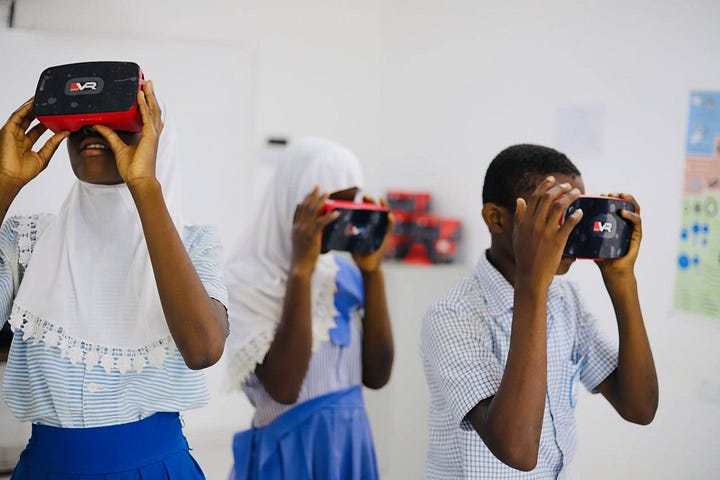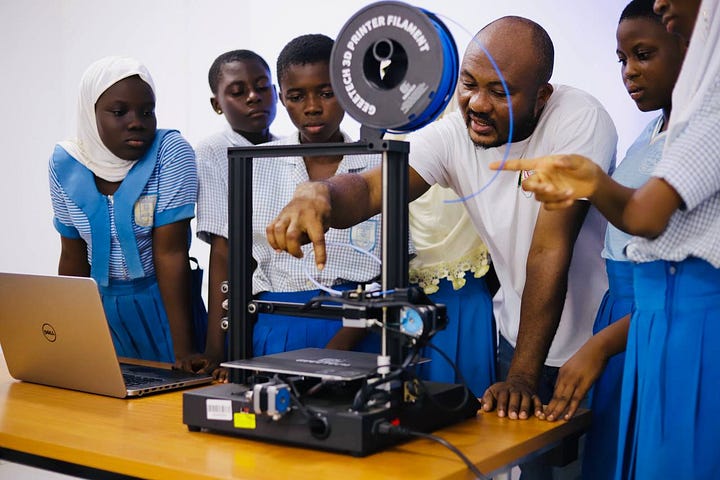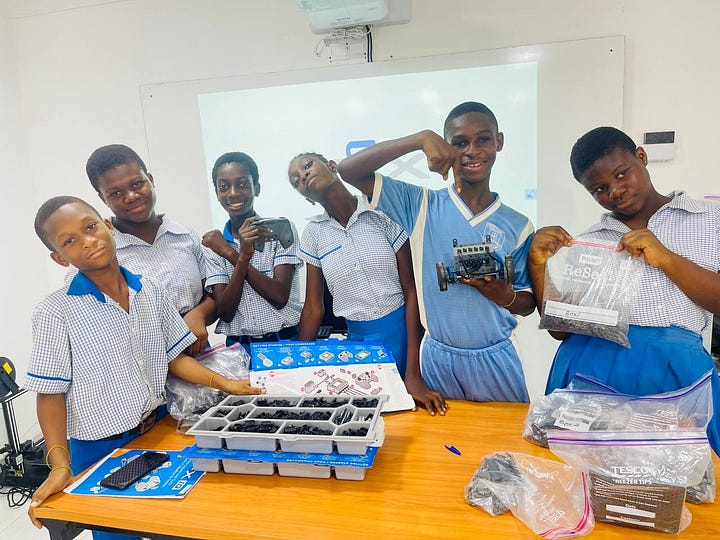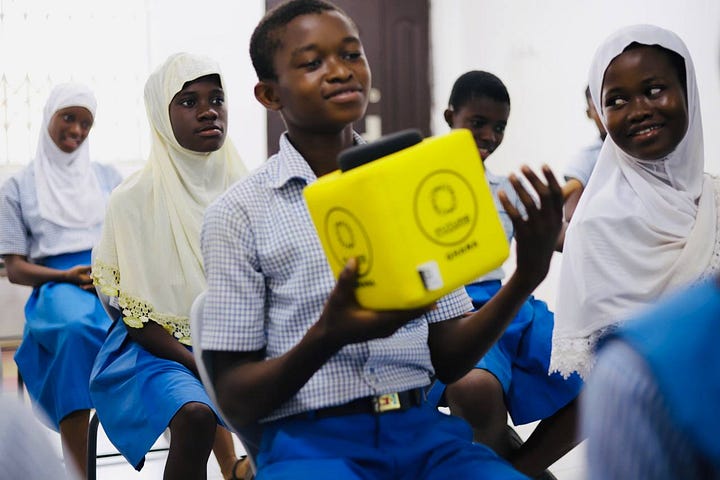It’s 11.37am. AJ checks his phone. His mum is passed out on the sofa. Outside police sirens fill the air. Instinctively, he checks on his little sister before locking the door and running down the broken steps to the street below. Now it’s 11.39am. He sits huddled on a concrete step, waiting for the No. 29 bus which pulls into view. He holds his phone to the sky and sees the Wifi bars come to life. His phone pings, the screen lighting up with messages from his friends. Sixty seconds later, the bus pulls away, his signal drops and he is left alone, disconnected from the world he longs to be a part of. For AJ, technology is a fleeting glimpse of what life could be like if only the world was equal.
Technology is one of greatest inventions - but it is also one of our most divisive. I know many students like AJ who sit on the wrong side of a needless dividing line. For these children, they are told that technology is humanity’s great hope, but for them, hope is a violent and antagonistic concept. On the margins, looking in, children like AJ are in danger of not only falling down the divide - but disappearing within it.
Thinly described in the press, and rarely discussed in educational arenas is a divide so wide that children are becoming lost in it. This divide is digital, but the fault lies not with the machines - it’s a human-made problem.
In the 1967 poem All Watched Over by Machines of Loving Grace, Richard Brautigan sketched out a dream of a technology-driven paradise that assumes universal access. By contrast, today’s digital world is fragmented by wealth, geography, and power. Half a century later, Dario Amodei, CEO of Anthropic, authored an essay titled ‘Machines of Loving Grace’ in which he envisions a future where advanced artificial intelligence (AI) brings transformative benefits across various sectors. According to Amodei, the children of today will grow up in a world where AI transforms healthcare by eradicating diseases and extending lifespans, revolutionises mental health by unlocking the brain’s complexities, drives economic development by reducing poverty and food insecurity, reshapes governance by influencing democracy and global stability, and redefines work by automating routine tasks, pushing humans toward creativity and deeper purpose. Preparing them for this reality is not optional, but essential. This is an ambitious vision for a technology that is not accessible to everyone.
How can children be part of this future when some of them can’t see it?
Dividing lines
When it comes to poverty, we tend to see it as a local issue - refined to what we can see in our immediate view. Far from the hedonistic playground of Silicon Valley, there is a story about ‘digital poverty’ unravelling at the edges of society and the difficult to reach places. The narrative here is around access to devices and connectivity. Thus its a two-fold problem we have created for ourselves.
I use the term ‘dividing lines’ to describe the invisible barriers that separate children from technology. These lines are everywhere, once you start looking, you can't unsee them. Think back to the pandemic when education escaped the classroom and moved online; for students like AJ, school simply disappeared. Without a device or internet access, they were locked out of learning entirely. In lower-income households, ‘digital poverty’ creates a stark contrast to their peers, with children often sharing a single device in environments that make focused learning nearly impossible.
The great paradox of technology is that a tool created to bring us together often ends up driving us apart. Connectivity is technology’s great promise but it’s a relatively modern problem.
Pierre Bourdieu’s concept of cultural capital explains why children from different social classes experience education unequally. In today’s world, ‘digital capital’ could be an extension of this as some children grow up fluent in technology, while others are locked out due to lack of access, creating a ‘two-speed’ system of opportunity. The poorest children are running in the outside lane watching on as their peers race ahead. Schools and institutions often assume all children start from the same position, but in reality, those in the ‘outside lane’ are running harder for the same finish line. This meritocratic illusion makes inequality seem like a personal failure rather than a systemic issue.
The shift to online learning only exemplifies the rift I write of above. In Distinction Bourdieu wrote that wealthier families use financial resources to secure better educational opportunities such as tutors, international study programs, or elite universities. In today’s world some children get access to online tutors, adaptive learning platforms and subscriptions to AI language models whilst others go without. What divides children is the same thing Bourdieu wrote about - money. But in a world of accelerating returns where being ‘digital’ means being part of a fluent future - it doesn’t have to be this way. There is another option.
Digital horizons
If we fix our gaze on the future for a moment, it is easy to imagine a world where technology means equity. What children deserve in this world is connection to learning and opportunity, not exclusion from it.
Five years ago, inspired by HundrED.org, I linked my school in the UK with a school in Ghana. Through Zoom, we transformed a screen into a window between our worlds, learning together despite the vast distance. Aside from time, it cost us nothing. As the project grew, one truth became clear: technology’s greatest power is not its complexity, but its ability to unite people, no matter where they are or what barriers stand between them. Today, we have a Future Classroom in Ghana - showing what is possible when you collapse those dividing lines.




In November 2022, the world shifted once more as OpenAI released its ChatGPT model to the public. For the first time since the dawn of the internet, I saw a tangible way to level the playing field in education - a tool with the potential to bridge gaps and make learning truly accessible for all.
Yet, despite its promise, AI’s potential to transform education remains unrealised, and that frustrates me. AI has the power to change lives. Imagine a future where every child has a personal AI learning companion, tailored to their unique needs, learning habits, and aspirations.
As examinations shift from paper to digital - children will be able to use their voices to speak the words that our generation wrote. Language divides will fade, and opportunities will open. Digital scribes and AI readers will support those children who require the most support to learn, and LLMs will handle marking, freeing teachers to focus on what truly matters, creating inspiring lessons.
My greatest hope for technology is not its complexity, but its ability to bring learning closer, in a way that is fair, accessible, and transformative for all. This is a call to action to those who hold the power to help children like AJ realise their potential by collapsing needless the dividing lines new technologies like AI create.
References
Amodei, D. (2024) 'Machines of Loving Grace', October. Available at: (Accessed: 7th Feb 2025)
Bourdieu, P. (1984) Distinction: A social critique of the judgement of taste. Translated by R. Nice. Cambridge, MA: Harvard University Press. (Originally published in 1979)
Brautigan, R. (1967) All watched over by machines of loving grace. San Francisco: Communication Company.
Hunrded.Org - The Ghana Project: Link





